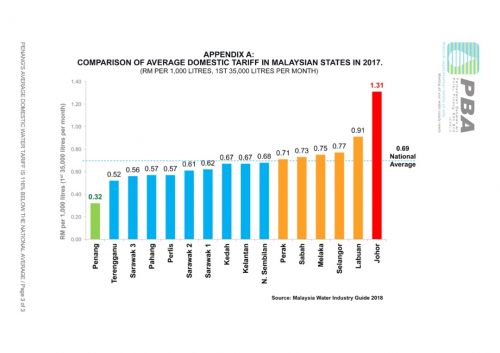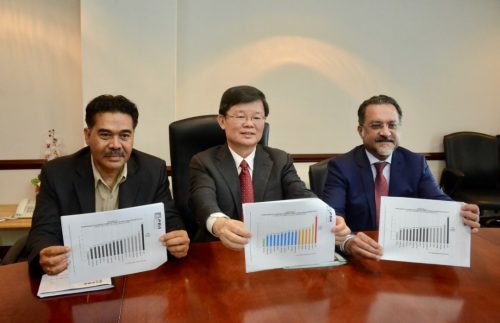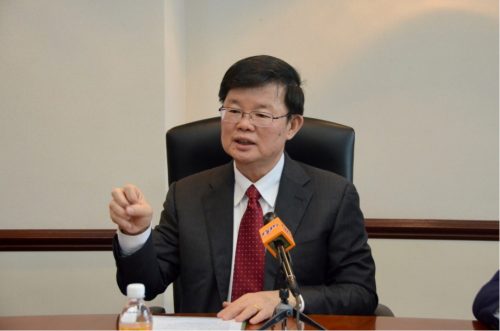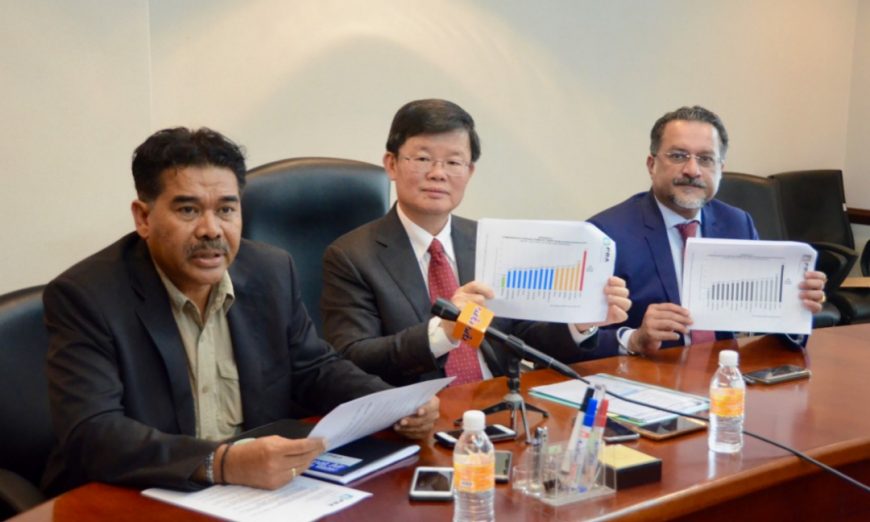PENANG has the lowest average domestic water tariff in the country (for the first 35,000 litres per month) because it is heavily subsidised.
Penang Water Supply Corporation (PBAPP) sustained a total domestic water subsidy amounting to RM79.6 million in 2017. The estimated amount of subsidy increased to RM83.6 million last year (2018).
PBAPP chief executive officer Datuk Jaseni Maidinsa said the RM163.2 million in subsidies for the past two years were not sustainable.
“Our existing water tariff is too low. According to the Malaysia Water Industry Guide 2018, our average domestic water tariff is only 32 sen per 1,000 litres (for the first 35,000 per month).
“It is way below the national average of 69 sen per 1,000 litres (for the first 35,000 per month). A whopping 116% below the national average.
“In other states, the average tariff for this category of domestic consumption ranges from 52 sen per 1,000 litres (in Terengganu) to RM1.31 per 1,000 litres in Johor.
“The 2017 data which was just released this month was prepared by the Malaysian Water Association and the Water, Land and Natural Resources Ministry,” he told a press conference at Penang Development Corporation today.
Jaseni said there were 518,001 domestic consumers and 86,546 trade consumers in 2017.

*Meeting future demands*
The proposed water tariff review was to reduce the subsidy given to fund key water supply projects.
Jaseni said the subsidy was even higher than the corporation’s net profit.
“The tariff review is to reduce the subsidy progressively. With the new tariff, the subsidy should be lessened to a more manageable amount.
“We have proposed five water supply projects over three years to stay ahead of the state’s water demand and these projects cost about RM501 million,” he said.
*What are the five key projects and why do we need them?*
Jaseni listed the five key projects, namely, the 1,200mm Butterworth-Penang island Twin Submarine Pipeline (the third submarine pipeline); Sungai Perak Raw Water Transfer Scheme (SPRWTS); upgrading all existing water treatment plants, reservoirs and pumping stations; installing new pipelines and replacing pipelines; and non-revenue water management.
“Currently, we have two submarine pipelines. These pipelines are needed to bring water from the Penang mainland to the Penang island.
“The first submarine pipeline was commissioned in 1973 and that pipeline is coming to the end of its design life.
“As the CEO, I can’t wait for the first pipeline to be ‘dead’ before having the third pipeline. Hence, before we stop the first submarine pipeline, we must put the third one in place.
“The cost of the 1,200mm Butterworth-Penang island Twin Submarine Pipeline is around RM120 million. The construction is already in progress at 16% and it is scheduled to complete in 2020,” he said.
Jaseni said the pipeline would be buried six metres below the seabed to prevent it from being damaged by anchors from the ships.
“The submarine pipelines will also carry the additional water we are to receive when the SPRWTS project kicks in.
“We had a discussion on the SPRWTS and we will follow up on the matter.
“Thirdly, we need to upgrade treatment plants, reservoirs and pumping stations. The main objective is that we want to maintain a good reserve margin.
“Penang has the best reserve margin in Malaysia at around 35%.
“To keep it simple, when you have a good reserve margin, you will not have water interruption or rationing if a plant is shut down.
“Whether if the plant is shut down for normal maintenance or because it broke down, we can still supply water if we have a good reserve margin.
“For states like Selangor and Kedah where their reserve margin is almost zero, they can’t even afford to have one infrastructure stop operating. That is the reason why they had many water interruption and rationing cases.
“We also need to lay new pipelines to meet future demands. We must plan ahead.
“We have to prepare for new and future development. We can’t wait until after the development is completed, only then we lay the pipes.
“As for replacement of pipes, we have to replace old pipes. Those are old asbestos cement pipes which are beyond their design life. On average, we have to replace about 40km of pipes.
“Lastly, we are striving to reduce our non-revenue water losses through non-revenue water management,” he said.

*SPAN and its responsibilities*
Jaseni said that the National Water Service Commission (SPAN) was trying to introduce a new water tariff mechanism to standardise the water rates in Malaysia.
“SPAN wants all water operators to comply with the KPIs that the Commission has given, such as to produce good water quality. There are parameters set and SPAN will measure those parameters.
“When a water operator proposes a project, SPAN will determine whether the project is relevant or not.
“As for the water tariff review proposal, SPAN wants to make sure that the water tariff review is fair. The Commission will gather feedback from non-governmental organisations and representatives from the consumers.
“SPAN will then table the feedback and proposal to the minister, and the minister will table it to the Cabinet. Only after the Cabinet is satisfied, the minister will then recommend for the review to be approved,” he said.
Jaseni added that the water industry is the only industry where the profits are regulated.
“This is because access to water is a basic human right, and it is SPAN’s and the minister’s duty to ensure that the water tariff is equitable,” he added.

*No water rationing*
Chief Minister Chow Kon Yeow said the five key projects were needed to ensure no water rationing in Penang.
“We have to reduce the subsidy given to finance those five water supply projects which cost around RM501 million.
“We hope that the consumers can understand the situation that we are facing. We have to strike a balance between the subsidy given and the amount needed to finance the five crucial water supply projects for the benefit of the people,” Chow said.
Story by Christopher Tan
Pix by Alissala Thian
Video by Chan Kok Kuan

